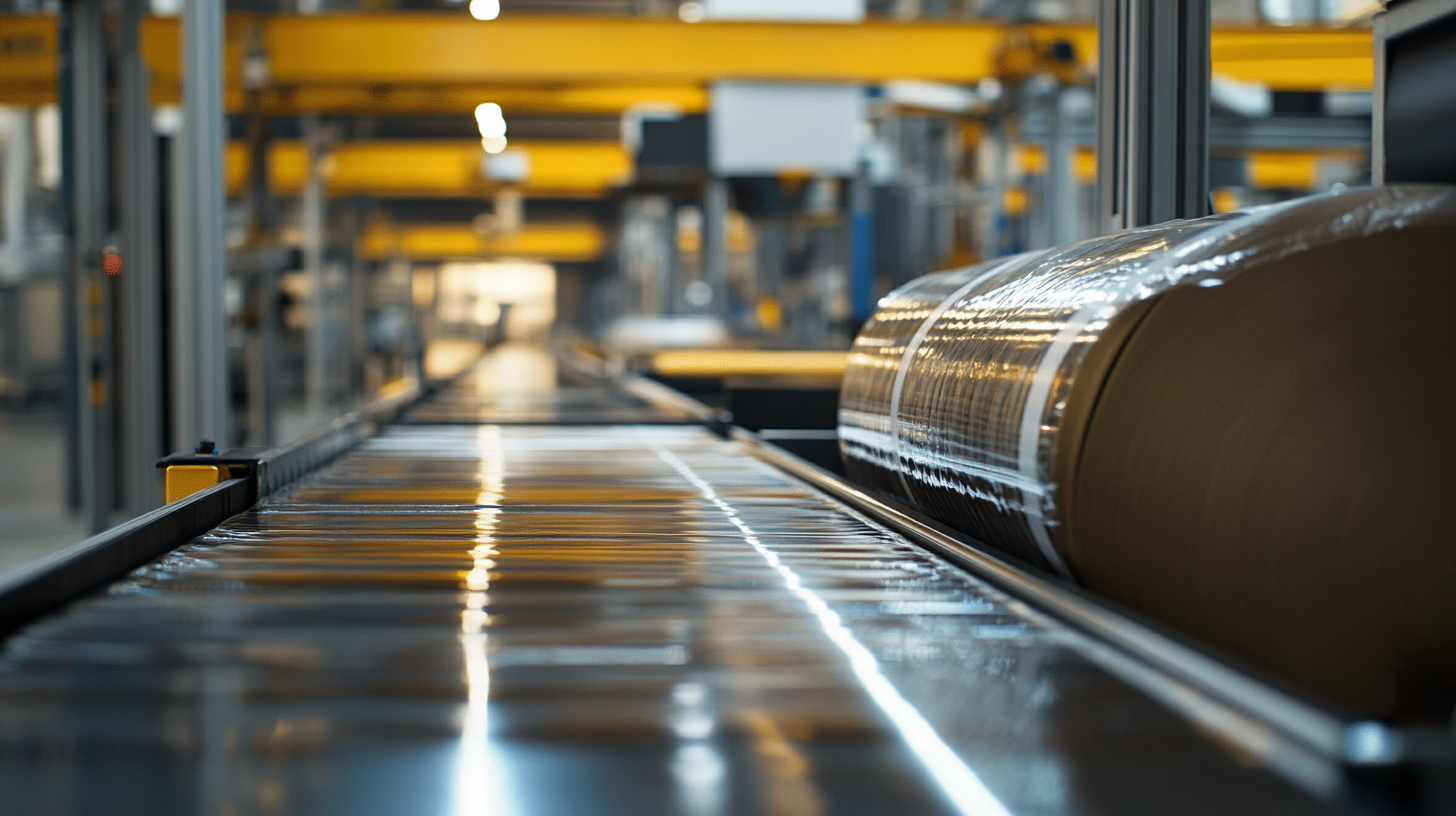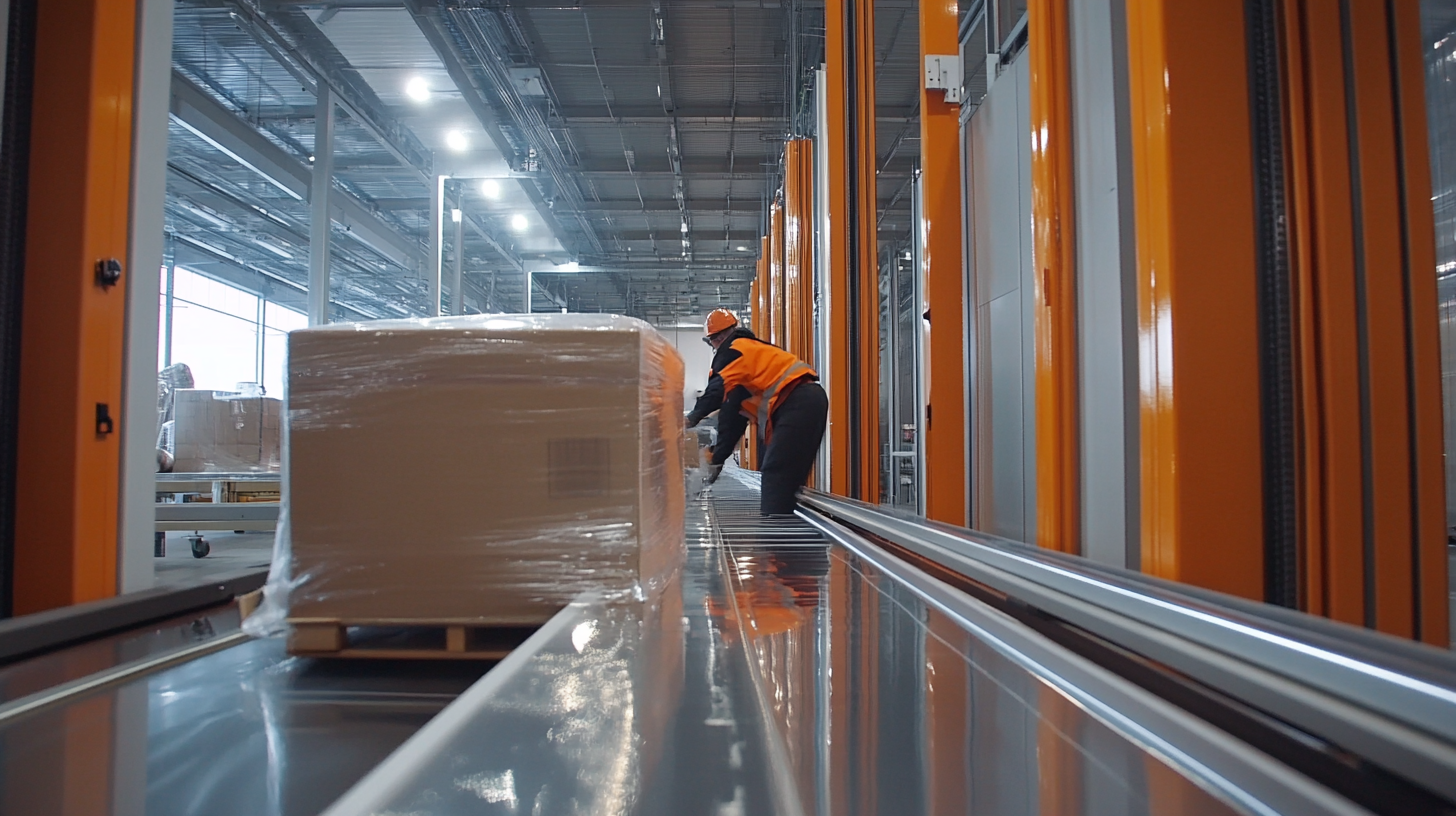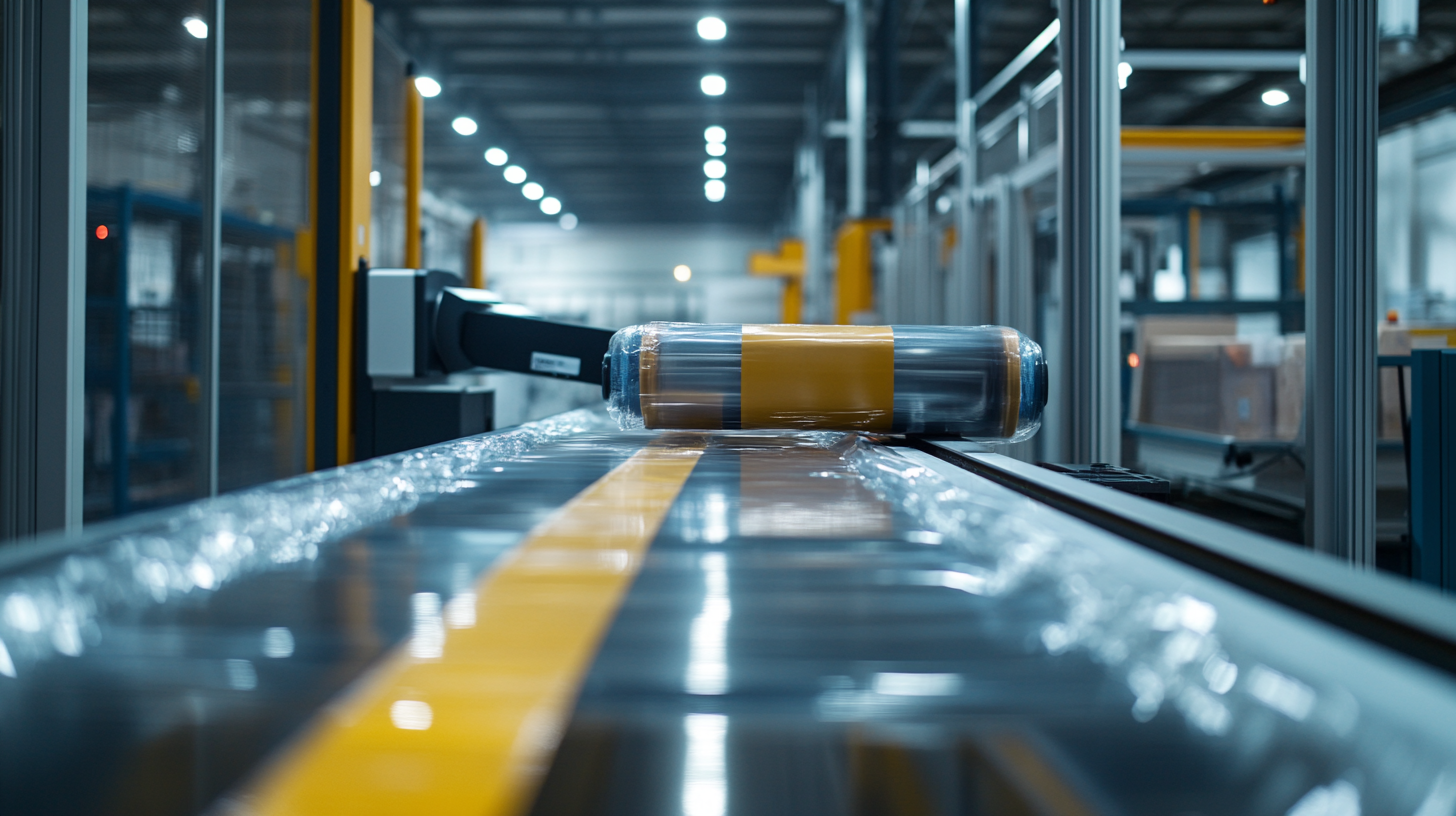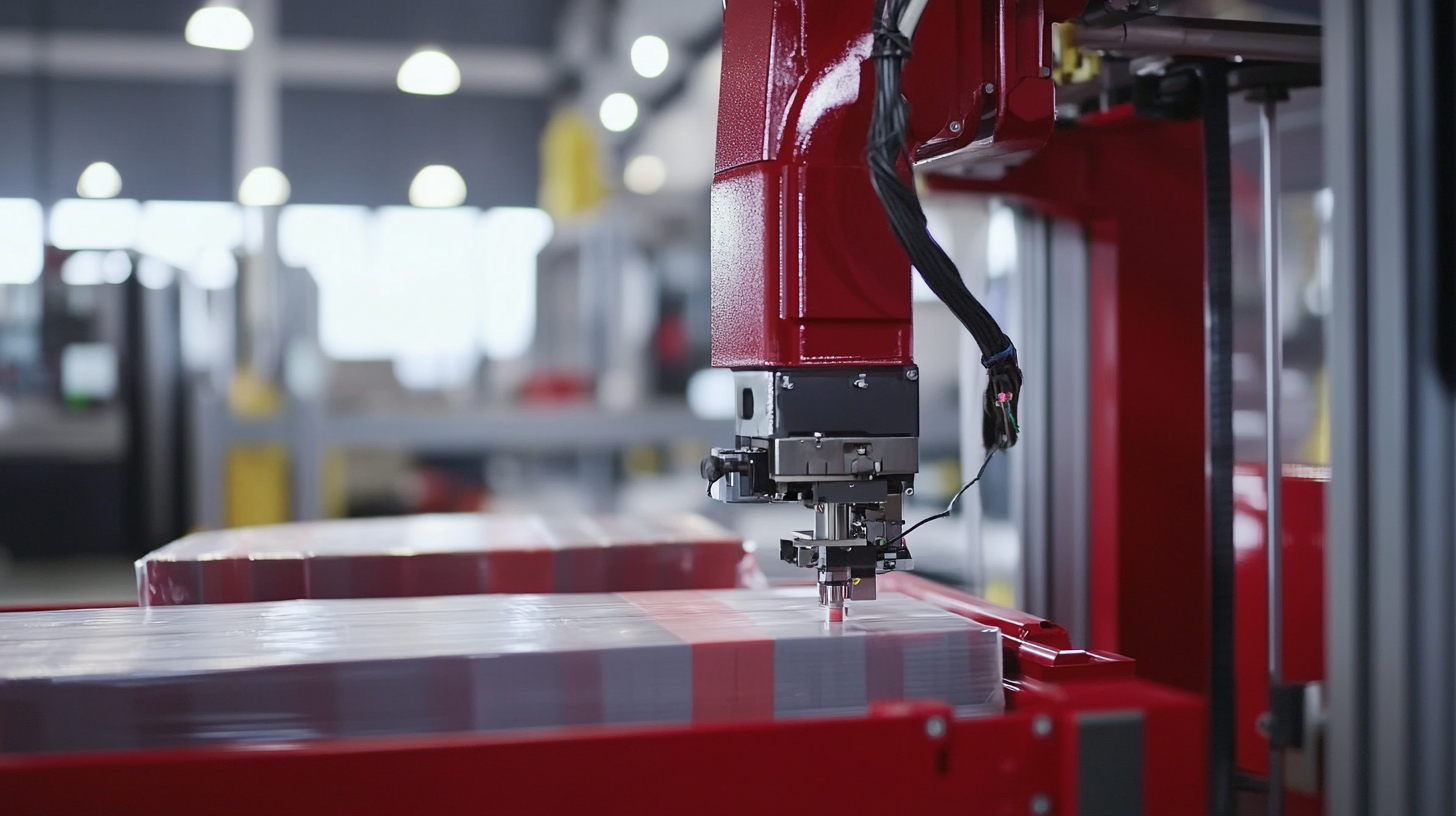Innovative Strategies for Optimizing Efficiency with Advanced Wrapping Machines
Today, households have seen continuing changes. Times where efficiency can be compromised have ended, so precision has to be cranked up a notch. By this industry report by Grand View Research on wrapping machines, the global market size for wrapping machines was valued at USD 4.6 billion in 2022, and it will expand at a CAGR of 4.5% with effect from 2023 to 2030. This phenomenal growth in the market emphasizes how critical wrapping machines are in effacing the packaging process and elevating productivity in a variety of arenas-e.g., food and beverage, pharmaceuticals, or consumer goods.
Not only do machines favor production streamline and waste reduction, but it also offers innovative approaches towards the wrapping process. Besides automating packaging works, wrapping machines help standardize delivery of the pack, and reduce labor as well as material usage quantities in package processing. According to Smithers Pira, efficient wrapping technologies may cut as much as 20% from the packages, making considerable contributions to the bottom line profits. Investing in state-of-the-art wrapping machines gives companies that much-needed breathing space to stay competitive in the marketplace and to meet rising consumer expectations for efficiency and sustainability.

Strategies for Integrating Smart Technology in Wrapping Machine Operations
Integration of intelligent technology in wrapping-machine operations has changed the entire scenario of the packaging industry. As per a report published by Smithers Pira, the value of the global packaging machinery market will reach $57 billion by 2024-from the demand of more efficient and versatile packing options. Advanced wrapping machines with smart technology significantly improve producers' productivity while cutting down waste. For instance, real-time monitoring systems provide data analytics in which manufacturers can optimize their production speed and reduce tabletop downtime by 25%. Such an aspect of these smart technologies in terms of wrapping operations is the incorporation of IoT capabilities. Research and Markets discovered that the IoT-enabled packaging market will develop by 20% each year until tracking, inventory management, and prediction accuracy are greatly enhanced. Smart wrapping machines can now connect directly to other production units, ensuring that they communicate and coordinate with each other in a supply chain. In this way, operational efficiency is improved, and overall product quality goes up because, for all deviations, feedback loops are provided instantly. Predictive maintenance using AI can also be a major factor in reducing shutdown time in wrapping machinery applications. According to Corum, organisations can reduce their maintenance costs by 30% and increase the uptime of machinery by 20% if they apply artificial intelligence and machine learning technologies. By harnessing artificial intelligence, manufacturers can forecast machine breakdowns before they happen. Uninterrupted and efficient wrapping processes will be maintained. This takes the operation towards a green path because it cuts down the overall energy and materials that would otherwise be wasted when equipment is not operational due to unforeseen reasons.

Enhancing Workflow Efficiency through Automation in Packaging Processes
When automating the industry, organizations are able to engage in processes that ultimately contribute further to resource income maximization through very efficient workflow applications. The introduction of advanced wrapping machines is included in other changes. The size of an increasing global packaging automation market has been calculated by ResearchAndMarkets to be around $75 billion by the year 2026, registering a CAGR of 6.8% for this growth. The increasing demand for faster production lines as well as the input cost-savings on labor drive this increase.
Automating packaging processes significantly reduces manual activities and, therefore, reduces human error. For instance, companies that use the latest wrapping machines have seen time for packaging reduced by almost 50%. That time can then be used to reallocate resources toward activities that add more value. A recent study found that organizations that implemented automation on their packaging lines enjoyed a boost in overall efficiency of around 30%. This improvement reflects directly on productivity and profits.
In addition, advanced machines are equipped with smart technology that allows for real-time data collection and analysis. Thus, with the capability of adjusting operations by measuring performance metrics operation-wise, these machines are able to ensure an optimal workflow at places of work. Among the findings of a survey conducted by the Packaging Machinery Manufacturers Institute is the fact that 47% of manufacturers are now able to record measurable improvement in operational efficiencies as a result of automating their packaging processes. This would therefore not be just a passing fancy but the new foundation of operational excellence in the packaging industry making it part of automating workflows.

Implementing Data Analytics for Performance Monitoring of Wrapping Machines
Using data analytics within a wrapping machine operational framework enables better performance monitoring, which could mean efficient operations at levels unprecedented for manufacturers. It helps companies identify problem areas in the wrapping process, forecast that maintenance will happen, and keep machines functioning at their peak best by pulling and analyzing data from various processes in wrapping. With the help of advanced analytic tools, millions of data translate into actionable insights, allowing operators to make quick decisions.
Monitoring real-time machine procedures also has another role in terms of data analytics application. Sensors inside the wrapping machines provide constant feedback about speeding, the quality of wrapping, and the usage of the materials. With the use of dashboards to visualize the captured data, operators are able to widen their improvement search into areas to adjust in real time without waiting to perceive inertia or experiencing downtime. Also, with the historical data sequence studied, future estimates can be made to prepare changes before their occurrence rather than after the event.
Over time, machine learning algorithms also take the operations of wrapping through conditioning improvements. The more these algorithms learn from data, the better they identify the most effective wrapping configurations and strategies that minimize material wastage while maximizing throughput. From an ideal procedure, this learning process transforms the wrapping operation continually into a dynamic system, attuned to use resources more efficiently while continuously evolving because of changes in requirements and conditions, which will thus be leading to huge savings and productivity improvement.

Sustainability Practices: Eco-Friendly Materials and Energy Efficiency in Packaging
In this currently evolving era of packaging, sustainability is the apex of focus for businesses that need to balance eco-friendliness with efficient operational processes. Eco-friendly materials are one of the three important strategies of this change. More companies are now adopting the use of biodegradable plastics, recycled papers, and sustainably sourced materials that minimize environmental impact as well as integrity of the products. The new materials hence not only answer the consumers' demands for responsible packaging but also cater to regulatory trends driving towards reduced carbon footprints.
And importantly, energy efficiency in packaging processes is another aspect of sustainability. Newage wrapping machines are equipped with features that save energy and that allow the manufacturer to greatly reduce its energy consumption. Machines of this nature feature intelligent control units that optimize energy consumption during production while reducing wastage and lowering operational costs. So with investments in such energy-efficient technologies, businesses are improving their green feet and probably also their bottom lines.
Moreover, a combination of both eco-friendly materials and energy-efficient practices often supports sustainability objectives as it gives an edge to companies in competition in the marketplace. Companies nowadays should note that consumers are attracted more to brands that have an environmental responsibility nature; therefore, packaging strategies should be re-evaluated. These new ways of engaging in business will keep organizations relevant and answerable to a global audience that demands responsible behavior in sustainable areas of existence.
Training and Skill Development for Optimal Usage of Advanced Wrapping Equipment
All of these trends make training programs indispensable, if not mandatory, to ensure that the employees of organizations derive the benefit of mastering operating at such advanced equipment. Packaging machines, of course, are heavily in demand because their market valuations are estimated to grow by 4.5% a year as per the report by the Freedonia Group. This study of recent developments in the packaging machinery sector makes recent investments in personnel a matter of increasing relevance.
Such training programs are beneficial because they train operators to work with wrapping machinery safely and effectively. Safety measures enhance the quality and productivity of people with better skill sets as a result of such training in minimizing human errors. The International Society of Automation states that operational downtimes due to poorly trained operators may be reduced by 20%. Such savings can be a clear plus for businesses looking to sustain a competitive advantage. Firms that invest in skill development by training personnel create an environment of constant improvement geared toward new innovations in processes and techniques that further provide huge gains in efficiency.
In addition, the use of advanced wrapping machines' data analytics and real-time monitoring facilities could inform training. Examining the performance metrics would give the organization an understanding of the skill deficiencies, which would then help tailor the training exercises for them. This, therefore, fosters an environment of learning that, in turn, empowers its workforce and upholds the standards of operational excellence that allow organizations to optimize the performance of their wrapping technology.
